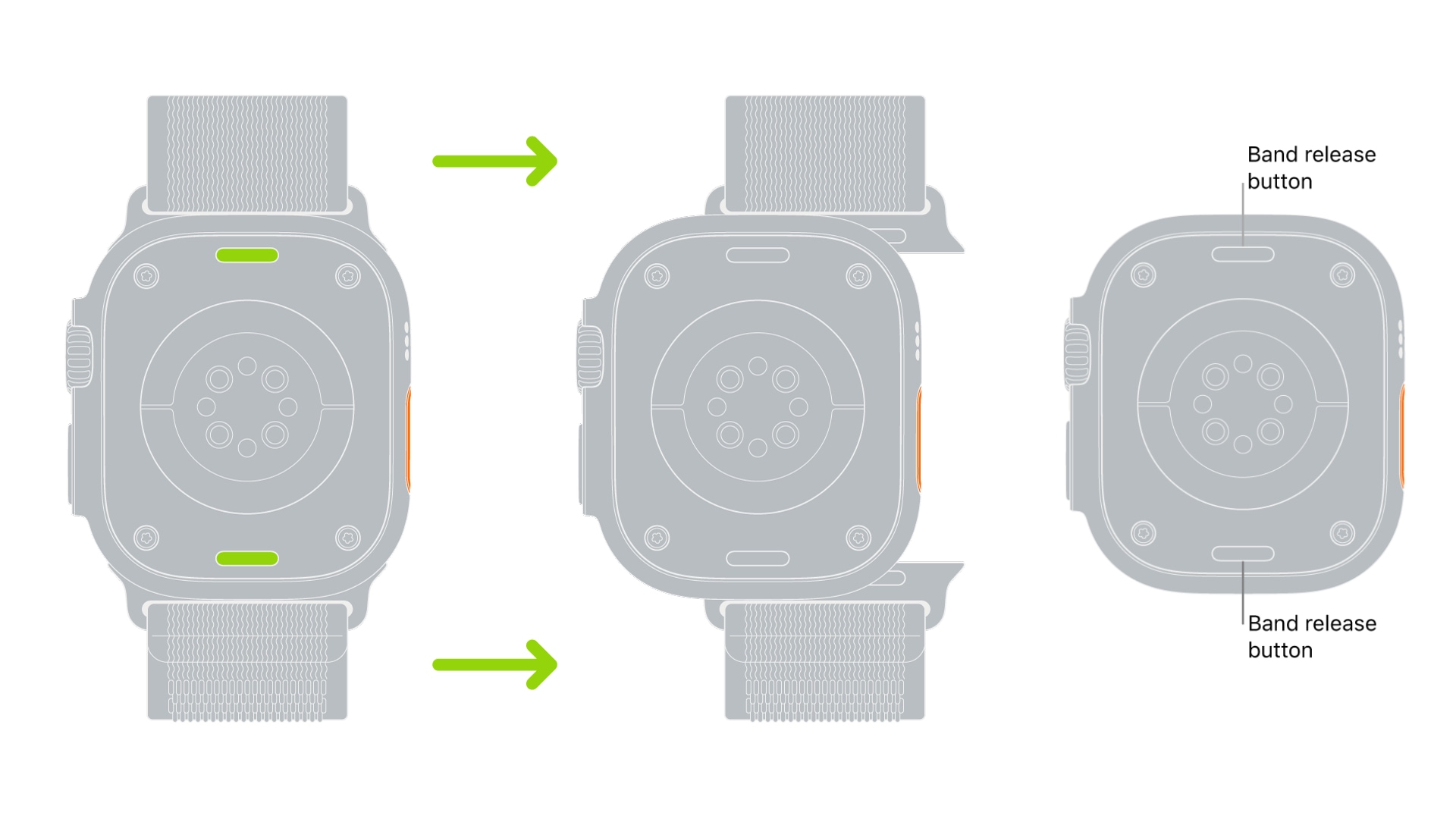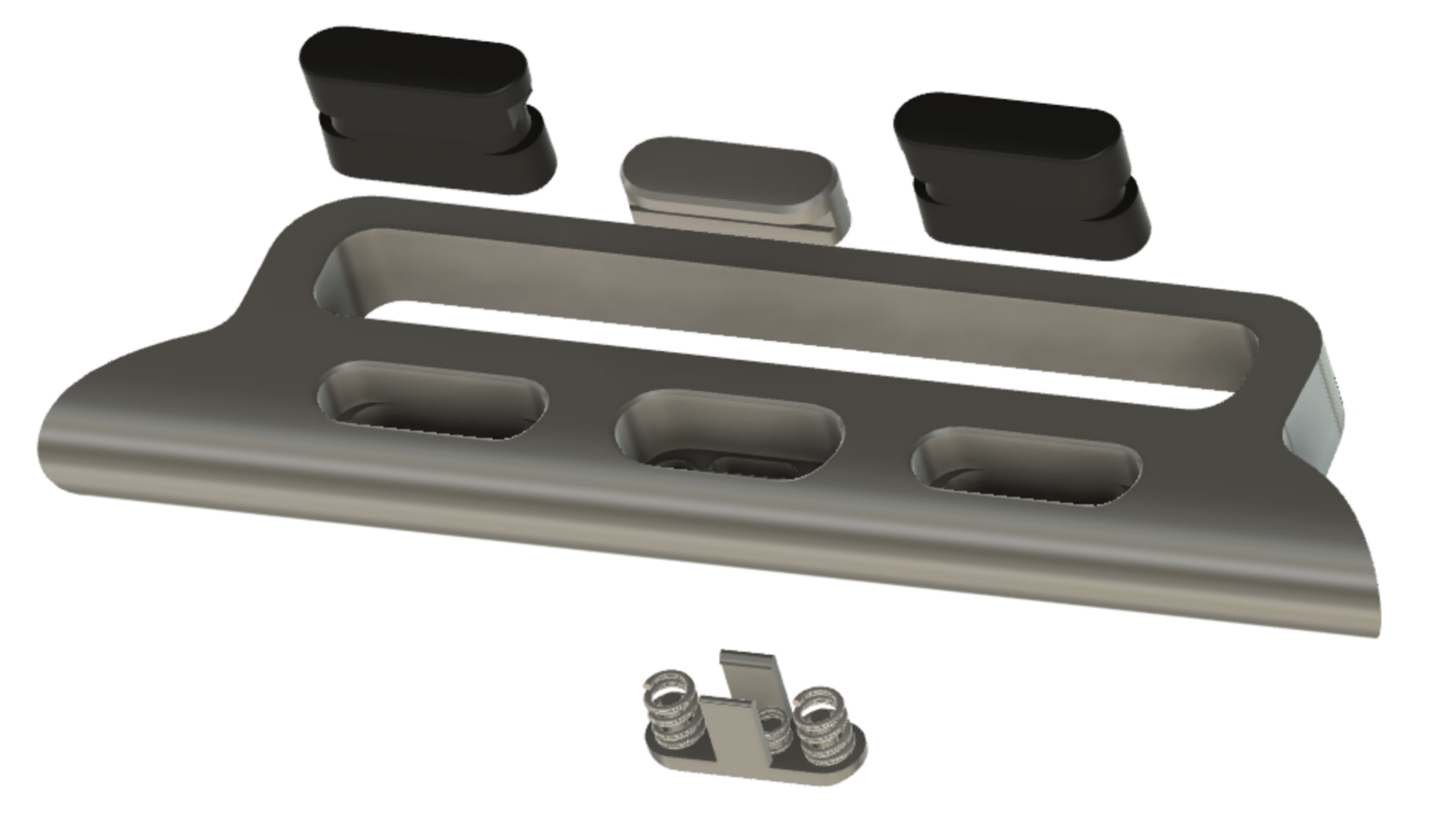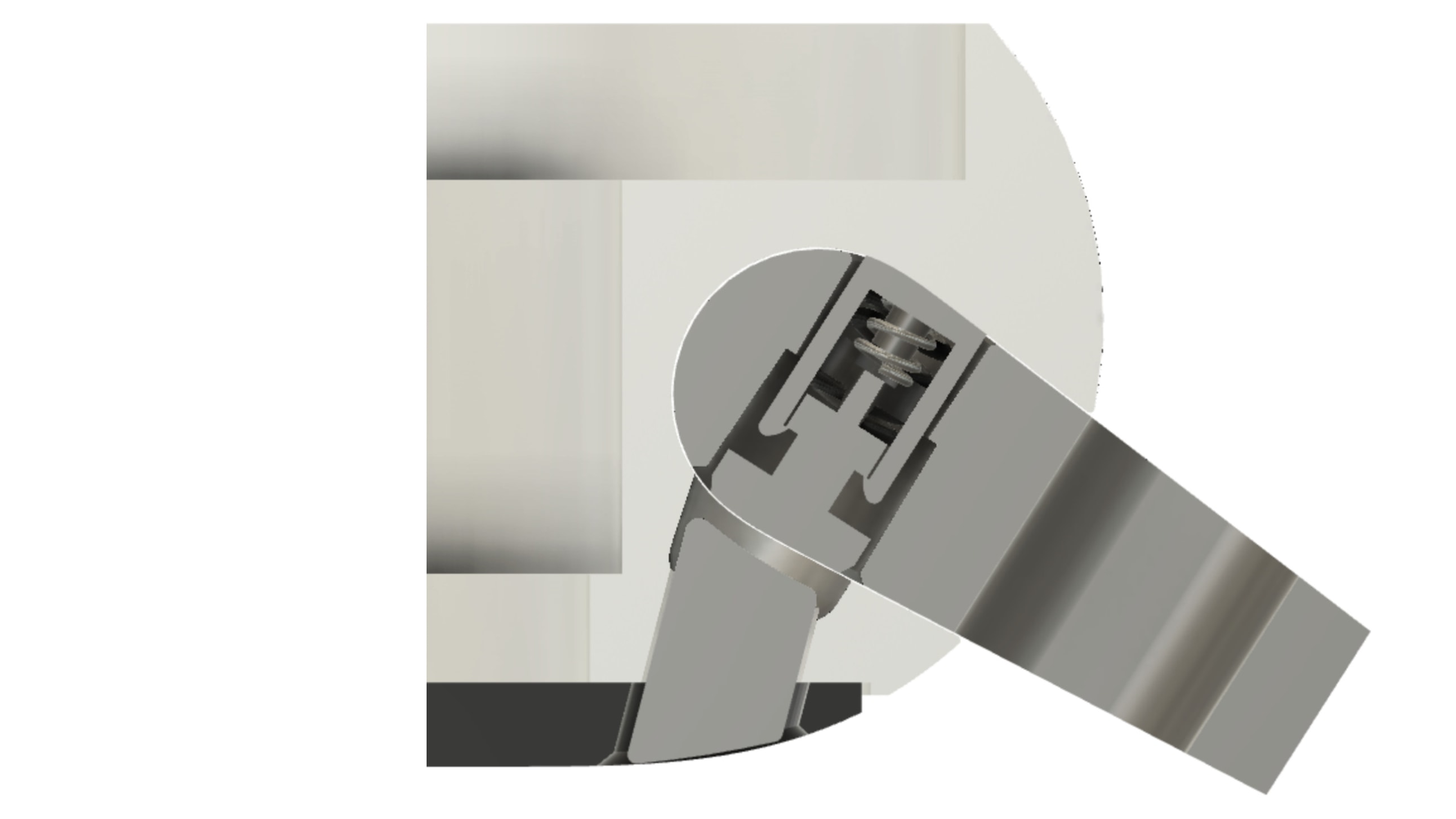Apple Watch has popularized swapping straps thanks to its seamless band release mechanism that’s much more complex to manufacture than you can ever imagine.

- The Apple Watch uses three buttons to connect each band. The system interlock so precisely that building it requires CNC machines costing $2 million each.
- The proprietary mechanism is foolproof and has popularized swapping Apple Watch bands because it’s simple to use and requires no jeweler’s tools.
- It’s not Jony Ive’s idea—he pushed for a single strap attached by magnets.
A closer look at the Apple Watch’s band release mechanism
The system is known internally at Apple as the X206 assembly, and consists of the band portion and the watch’s strap system within the band slot.
The band portion consists of a tooth, a spring mechanism and a pair of rubber bumpers. The watch portion consists of a tooth and a spring mechanism, with the springs and the buttons responsible for that satisfying audible click.
The individual parts are “super hard to machine,” so Apple bought CNC machines that cost $2 million each just to cut the parts for the X206 assembly. “It didn’t cut anything else on the watch, just this, that’s all it did,” a source said.
Tolerances measured in microns
Antonio G. Di Benedetto and Sean Hollister of The Verge spoke with two former Apple engineers who’d worked on manufacturing the parts for the X206 assembly.

Manufacturing tolerances here are insane:
For a little perspective, a human hair is about 70 microns thick and a regular CNC can cut down to about plus or minus 50 microns. As for the fancy-schmancy Swiss CNCs for cutting the Apple Watch band slot? The accuracy is plus or minus five microns, the ex-Apple engineers say.
Five microns!
Even with that precision, “the number of finished watch housings and bands they have thrown away because they didn’t meet these exacting tolerances is an inordinate quantity. It’s not a small number.”
Apple bought “hundreds” of these expensive CNC machines.
“At the time, the largest buyer of these machines was Rolex,” ex-engineers say. “And then Apple bought more than anyone had ever bought, including Rolex up until that point.” But you don’t become a watchmaker overnight by just buying CNC machines from under Rolex’s nose.
And:
The number of people who lived in the factory getting these machines up and running, 24/7 sleeping bags on the floor, is not zero. People’s whole lives to get that one slot perfect.”
And:
The little springs are so tiny that Apple automated the assembly process. “If you get a pin, you can pop it out and take it apart, but you will not be able to put it back together,” they say.
A multi-billion dollar ecosystem
Apple designed the band release mechanism with two goals in mind. First, to be super easy to use. And second, to give birth to an ecosystem of swappable watch bands. Curiously, Apple’s former design head Jony Ive originally wanted to create a single strap attached by magnets.

The band release mechanism has stayed the same since the original Apple Watch, and is a big part of why all Apple Watch bands have remained compatible across different models to this date. And ease of use likely played a significant part in helping launch a $1 billion ecosystem of Apple Watch bands.
The Cupertino company offers a myriad of Apple Watch bands and buckles that use various materials such as silicone, fluoroelastomer, nylon, polyester yarn, leather, stainless steel and titanium. To make your band last longer, be sure to read our guide about cleaning Apple Watch bands properly.